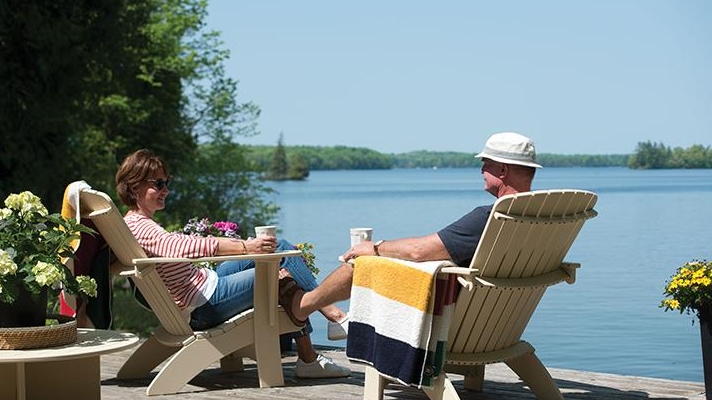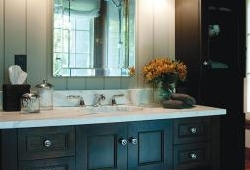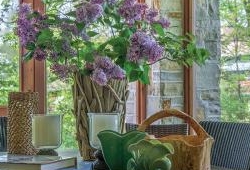Builder and developer John MacDougall was always excited about architecture. Graduating from Carleton University with a civil engineering degree, John first worked in Calgary and then returned to Ottawa where he re-connected with classmate Peter Stenger, whose father Walter was a home builder and founded Uniform Developments.
With Walter’s guidance and assistance, John and Peter joined forces in 1984 to start their own company as co-owners of Uniform Urban Developments. Since then, they have built more than 100 homes a year across the city region, and won numerous design awards from the Greater Ottawa Home Builders’ Association for excellence.
Their latest development project is Wateridge Village at Rockcliffe, site of the former CFB Rockcliffe Lands. This master-planned community by Canada Lands will include residences, retail and office spaces in an urban setting of over 300 acres surrounded by multiple parks and green space. Uniform Urban’s first release of 90 lots in the forested area surrounding the Montfort Hospital happens late this summer.
But life cannot be all work and no play! John and his wife Manon Gouin find refuge in their historic cottage on Big Rideau Lake. Having worked closely with Barry J. Hobin & Associates Architects on various projects, John felt he was the perfect choice for the design renovation of the neglected, but once splendid, summer residence. When he first saw “Ironwoods” cottage, he was drawn to its Craftsman-style architecture, which is similar in design to some Uniform Urban homes.
Gutting and renovating turned out to be more work than building a new place, but once he embarked on the path there was no return. Now John, Manon and their three sons – Phillip (an architect in New York), Matthew and Ryan (who both work at Uniform Urban) – make time to enjoy the three-season cottage.
WHAT MADE YOU DECIDE TO BUY IRONWOODS? It was built and designed for Gordon Cameron Edwards, a Canadian lumber baron, by the same architect who designed Stornoway – Allan Keefer. I purchased the cottage and ten acres of land from a family descendant in 2008. At the time, I was looking for a cottage about 2,500 sq. ft. in size, and this had four bedrooms and an adjacent 1,000 sq. ft. bunkie with three additional bedrooms.
It was a big project that needed a lot of TLC, and I worked with Barry Hobin, interior designer Danielle Hannah of 2H Interior Design and landscape architect Gerry Larocque to bring it back to its former splendour. The setting is picturesque and being on a point of land, it has water on two sides. You drive through meadows and forests of sugar maples, white pine and ironwood trees on the kilometre-long access road. Front stone walls were planted with native perennials, and ground-covering periwinkle has existed there forever. It was hard to resist!
WERE THERE MANY CHANGES FROM THE ORIGINAL DESIGN? Initially, we took down some interior walls and studied the effect of doing that in order to design the new space. We kept a lot of the original windows and moved them around the building. The three-bedroom bunkie needed lots of work and because of strict bylaws we had to repair it 2 x 4 by 2 x 4, rather than knock it down and rebuild it. The cottage itself didn’t need a lot of exterior change, but we added a front porch, a screened-in porch to the lakeside and expanded the master bedroom by adding some dormers.
DOES IT STILL HAVE ITS ORIGINAL CHARM? It was important that the cottage be comfortable and homey after the renovation. It is built from Douglas fir and the living room’s wooden beams and panelling have beautifully patinaed over the years. The intricate trim work and base boards were quite substantial given the age of the building, and all the restoration was carefully planned using as much of the original resources, respecting the past, and then incorporating modernization when needed.
HOW DID YOUR EXPERTISE AS A BUILDER TIE IN WITH YOUR COTTAGE RENOVATION? I wanted to work with the right people who shared my vision for the property, and hired some of the key players that had worked with me on other successful building projects. No question it was hard work, but also fun and it definitely shows in what we accomplished with the final product.



































